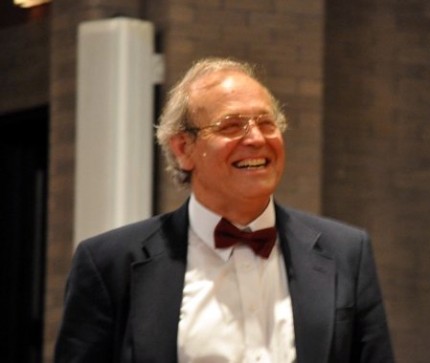Chicago Chorale provides robust performance of Vierne mass

In addition to the main vocal performances presented by the Chicago Chorale Sunday afternoon at Rockefeller Chapel, the event also offered a great opportunity to hear the chapel’s newly-restored E.M. Skinner organ in repertory that fully exploited the instrument in all its glory.
With its 8,565 pipes in 132 ranks, it filled the cavernous space in a robust performance of Louis Vierne’s 1901 Messe solennelle, Op. 16, originally written for Notre Dame Cathedral in Paris. This is an idiomatically French mass which sparkles with elegance and clarity, and director Bruce Tammen and Rockefeller organist Thomas Weisflog negotiated the various elements with ease, maintaining a good balance throughout between voice and instrument.
The brief but substantial program opened with two a cappella works which the Chorale sang from the choir loft behind the audience. The sound of these performances was clean and clear — actually better acoustically than similar music performed from the front of the church. As for the performance, it was straightforward with some fleeting intonation issues.
Bach’s motet Komm, Jesu, Komm (BWV 229) is a brief distillation of some the composer’s best sacred music. With its insistent appeal at the start, and its dynamic counterpoint throughout, it comes to a satisfying conclusion with a chorale of breadth and generosity. The Chicago Chorale took a plain approach to the piece, with a clearly-defined structure and transitions neatly pointed.
Schoenberg’s Friede auf Erden, heard here in its a cappella version, is an early work (1907), replete with tonality and emotion and experimentation. There are great blocks of choral sound expressing a very dark Christmas narrative that nevertheless resolves itself positively. The performance of this small masterpiece was cool and straightforward, not always doing full justice to the soaring and clashing extremes of the score.
Moving to the front of the Chapel, Tammen led organist and voices in the five contrasting sections of Vierne’s late romantic mass. Weisflog’s performance from the very first notes of his solemn entry at the start of the Kyrie was exemplary, and everything seemed to fall into place with the Chorale, which responded with polish and improved tonal purity.
The Gloria and Sanctus really showed off the dynamics of the organ and the excellence of the space, which was just as receptive to the more subtle details of the scoring for the various combinations of voice and instrument. At times the organ was orchestral, at other times quietly supportive. The climaxes were well managed and the gentler parts of the final movements were also treated with finesse. All things considered, the Chicago Chorale delivered a satisfying rendition of a charming Gallic masterwork.
Posted in Performances




